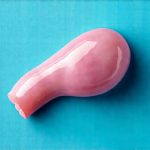The modern lifestyle often involves prolonged periods of sitting – at work, commuting, relaxing in front of screens, and so on. While we’ve become increasingly aware of the impact this has on musculoskeletal health (think back pain, stiff necks), less attention is typically given to how it might affect our urinary systems. Many people experience frustrating bladder symptoms like urgency, frequency, or even discomfort, often attributing them to stress, diet, or simply “just one of those things.” However, emerging research suggests a compelling link between extended sitting and bladder irritation, potentially exacerbating existing conditions or even contributing to new ones. This is not about diagnosing any medical condition; rather, it’s about understanding the potential interplay between our sedentary habits and a vital part of our body’s function.
The connection isn’t necessarily straightforward but revolves around several factors. Prolonged sitting can reduce blood flow to the pelvic region, impacting nerve function and muscle support critical for bladder control. Furthermore, reduced physical activity associated with sitting weakens the pelvic floor muscles, which play a key role in maintaining continence and proper bladder emptying. It’s important to note that this isn’t always about dramatically increasing exercise; even small changes to break up long periods of sitting can make a substantial difference. Understanding these mechanisms is crucial for anyone experiencing bladder issues or simply looking to proactively support their urinary health in the face of modern lifestyles. You might also want to learn more about tracking bladder discomfort from sitting too long.
The Physiology Behind Sitting and Bladder Function
The bladder, as an organ, relies on a complex interplay between nerves, muscles, and blood flow to function optimally. When we sit for extended periods, several physiological changes occur that can disrupt this delicate balance. Reduced circulation is perhaps the most significant factor. Less blood flow means less oxygen and nutrients reaching the pelvic floor muscles, which directly support the bladder and urethra. This can lead to muscle fatigue and weakness over time, compromising their ability to effectively contract and relax – essential for both holding urine and emptying it completely. A weakened pelvic floor is a common contributor to urinary incontinence.
Beyond the muscular impact, prolonged sitting compresses the structures in the pelvis, potentially putting pressure on nerves that control bladder function. This compression can irritate these nerves, leading to heightened sensitivity and triggering inappropriate signals to the brain, resulting in feelings of urgency even when the bladder isn’t full. It’s also worth considering how posture plays a role; slouching or poor ergonomics further exacerbate pelvic compression and nerve irritation. Finally, reduced physical activity diminishes overall muscle tone throughout the body, including those involved in maintaining core stability – which is vital for supporting pelvic organs. For some men, this can lead to prostate discomfort after sitting too long.
The consequence of all these factors isn’t simply discomfort; it can contribute to a vicious cycle. Irritated nerves lead to urgency, prompting frequent trips to the bathroom, which further reduces opportunities for physical activity and muscle strengthening. This creates a feedback loop that worsens bladder symptoms over time. Addressing this requires not just treating the symptoms but also proactively modifying sedentary habits.
Breaking the Cycle: Lifestyle Adjustments & Support
Fortunately, there are several practical steps individuals can take to mitigate the negative effects of prolonged sitting on their bladders. The cornerstone is regular movement. This doesn’t necessarily require hours at the gym; even short bursts of activity throughout the day can make a significant difference. Setting reminders to get up and walk around every 30-60 minutes is an excellent starting point. Incorporating “micro-movements” – simple stretches or leg lifts while seated – can also help maintain circulation and muscle tone.
Beyond movement, paying attention to posture is critical. Ensuring proper ergonomic support in your workspace – a supportive chair, monitor at eye level, feet flat on the floor – minimizes pelvic compression and nerve irritation. Strengthening the pelvic floor muscles through exercises like Kegels (though it’s important to perform them correctly – see resources below) can improve bladder control and reduce urgency. Finally, staying adequately hydrated is essential for overall urinary health, but avoiding excessive fluid intake before bedtime or engaging in activities that might exacerbate symptoms can also be beneficial. It’s also worth noting that a holistic approach – addressing stress levels, dietary factors (avoiding bladder irritants like caffeine and alcohol), and getting sufficient sleep – can further support bladder function. For women concerned about how sitting affects their bladders, it is good to know does sitting too long harm the bladder in women?.
The Role of Pelvic Floor Exercises
Pelvic floor exercises, often called Kegels, are widely recommended for improving bladder control, but technique is paramount. Simply squeezing your pelvic muscles isn’t enough; you need to ensure you’re isolating the correct muscle group and performing the exercise correctly. A common mistake is engaging the glutes or abdominal muscles instead of focusing solely on the pelvic floor.
To perform Kegels effectively:
1. Identify your pelvic floor muscles – imagine stopping the flow of urine midstream (although don’t regularly do this as an exercise, as it can be counterproductive). This sensation indicates which muscles you need to engage.
2. Squeeze these muscles for 3-5 seconds, then relax for 3-5 seconds. Repeat 10-15 times.
3. Focus on a slow, controlled squeeze and release, avoiding tension in other muscle groups.
Consistency is key; aim to do Kegels several times a day. However, if you’re unsure about your technique or experience pain, consult a physical therapist specializing in pelvic health for personalized guidance. They can assess your muscle function and provide tailored exercises.
Understanding Bladder Irritants & Dietary Considerations
Certain foods and beverages are known bladder irritants and can exacerbate symptoms of urgency and frequency. Common culprits include caffeine, alcohol, carbonated drinks, citrus fruits, spicy foods, and artificial sweeteners. While eliminating these substances entirely isn’t always necessary or desirable, being mindful of your intake and identifying personal triggers can be helpful. Keeping a food diary to track what you eat and drink alongside your bladder symptoms can help pinpoint potential irritants.
Hydration is also crucial, but balance is key. Drinking too little can concentrate urine, irritating the bladder lining, while drinking excessive amounts – particularly before bedtime – can lead to frequent nighttime awakenings. Aim for a consistent intake of water throughout the day, adjusting based on your activity level and climate. Finally, fiber-rich diets promote regularity, which can reduce pressure on the pelvic floor muscles and improve overall urinary health.
When to Seek Professional Help
While lifestyle adjustments often provide significant relief, it’s important to seek professional help if bladder symptoms are persistent, severe, or significantly impacting your quality of life. These could be signs of an underlying medical condition that requires diagnosis and treatment. Red flags include:
– Blood in your urine
– Painful urination
– Difficulty emptying your bladder completely
– Frequent urinary tract infections (UTIs)
A healthcare professional can perform a thorough evaluation to determine the cause of your symptoms and recommend appropriate interventions, which may include medication, physical therapy, or other specialized treatments. Self-treating is not advised. Remember that proactively addressing sedentary habits and supporting your pelvic health are vital for overall well-being, and taking steps towards these goals can significantly improve your urinary function and quality of life.





















